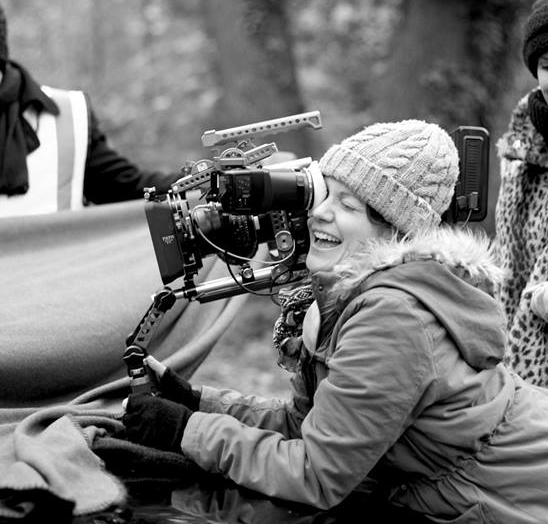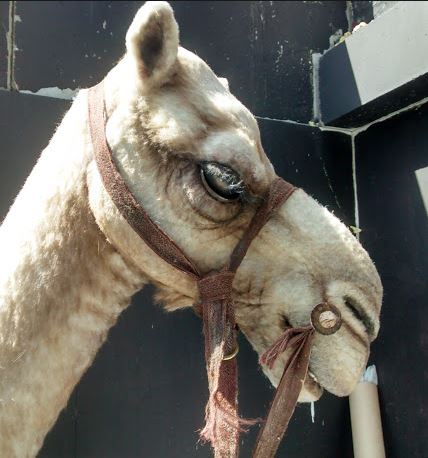ASK & DISCUSS
INDEXFilming Fluorescents/Neon/UV
9 years, 10 months ago - Jackie Read
I've got a short sci-fi piece coming up for which we are planning to build a set made of fluorescent or neon tubing.
This is what we are going for:
http://static.dezeen.com/uploads/2014/12/Bentley-Design-Miami-Light-installation-by-Massimo-Uberti_dezeen_468_2.jpg
To make things more FUN ... we are also hoping to use "glow" contacts and UV paint on the actors (we are trying to find a way to make them look like they have been inhabited by light and are now almost emitting light).
So, I'm looking for any and all advice regarding these subjects!
- Is it possible to film fluorescent tubing without flicker? If so, which bulbs would I need to get?
- If fluorescent tubing is an overall bad option, is there any other types of light I could use for this effect? I looked at neon tubes but they are insanely expensive.
- Would UV paint be a viable option for making the actors "luminescent" or are there other options?
Any and all advice on achieving these effects would be GREATLY appreciated!!
We will be filming with a Red Epic and I do have a decent amount of other film lighting available.
Thank you!!!
- Jackie
Only members can post or respond to topics. LOGIN
Not a member of SP? JOIN or FIND OUT MORE
9 years, 10 months ago - Paddy Robinson-Griffin
Wow, well it'll look great if you pull it off, but quite a technical challenge to get right. Iv think you'll want to do a load of tech tests before getting cast anywhere near set (or building a set).
Fluorescents, you'd need a high frequency ballast, ask your gaffer. Fluorescents are used in film work (kino-flo are fluorescents, for instance) but generally enclosed to make then safe, colour balanced, and entirely not the effect you're after. Getting custom neon structures is not going to be cheap.
Blacklight might be the way to go. You can get coloured UV-active paints and so forth relatively inexpensively, and can even but cheap and cheerful blacklights from Maplin. You will certainly want to see if the cheap blacklights are nearly powerful enough, flicker, etc., otherwise again ask your gaffer (via cinematographer) about UV Kino banks, for instance. You'll find a lot of bleached white clothes or any washed in 'whiter whites' washing powders will glow, but it's hard to predict what will and won't. Maybe get yourself a UV torch, you can do easy spot-checks with it whilst still in clothes/fabric shops.
How well will the camera cope? You'll have to do tech tests to find out. If the image is dark, expect a lot of sensor noise, which you'll need to mitigate. You could try shooting on a 5D instead, which with fewer pixels may give you less noise than 4k (all to do with photons exciting tiny teensy areas of silicon, but you will need to tech test). You may apply temporal denoising in post - very powerful technique but processor-intensive. You may just mess with the contrast to push the sizzle into the black region, and that may be the effect you want! Also bear in mind, if cast and set are the principal visible light sources, you might create specific problems for yourself with say parallax depth recognition, or loss of emotional detail. Your film, yours to discover what look you want... and discuss it all with your cinematographer (and not just some kid with a handycam calling himself a cinematographer, you will need someone with a bit of smarts/experience to get the best from this, I reckon).
My 2p, hope some of it helps and looking forward to seeing the result :)
9 years, 10 months ago - Christopher Sharman
Loads of great advice from Paddy. I think it's a great concept and could look amazing on screen!
You don't *need* high frequency ballasts, or colour-correct kino tubes, although both would be great. The cheapest way to go would be with ordinary domestic fluorescent fixtures. New ones are cheap, and won't flicker at normal filming speeds (you may have to control the flicker by adjusting your shutter if you're outside mains refresh rate, e.g. shooting 24fps on a 50Hz mains cycle). The only problems you'd run into are if you were hoping to do any high-speed work, or wanted dimmable ballasts which then you'd probably have to look at film-specific gear.
I've done this a few times where I've separated the tubes from a domestic fixture ballast, extending it away from the ordinary white housing. In this way I've shot films entirely using domestic tubes, and been really pleased with the results, though admittedly more in a 'gritty realism' than 'concept sci-fi' context! If the colour response of the domestic tubes is a problem, kinos are compatible and can just be swapped in. Also tubes can very easily be brought in off-camera to improve close ups.
Sensor noise shouldn't be a problem if you expose the sensor properly, which shouldn't be too hard in a structure made from fluorescent tubes! I've always found the Epic a tad noisy in the shadows at ISO800, so rate a little slower and you'll be fine.
The other thing you could try in conjunction with the UV paint or clothing on the talent could be using blacklight fluorescent tubes in the way I've described above, though I can't tell you how that might affect the exposure you can achieve and therefore the effect on noise levels.
Good luck and let me know if I can be of further help/advice.
9 years, 10 months ago - Jamie Kennerley
Get your blacklight tubes from a place like Panalux or another decent film lighting supplier and you won't need to worry about flicker. Kinoflo make them, as far as I'm aware. Just make sure you get a load, as you they don't have anything like the power level of regular Kino tubes.
For Neons - I've filmed them various times and always generally used cheap ones and had no problem at all. You just need a lot of them to really 'light' with them!
There's some images and clips on my site: http://www.jamiekennerley.com/
9 years, 10 months ago - Jackie Read
Thanks for the great suggestions everyone! I'm looking into florescent tubing and buying a few samples to run some camera tests. Panalux is coming to give a workshop at my school so I'm hoping I can talk to a representative about some possibilities as well (and some discounts!! lol)
Another option I recently thought of was LED Strip lights. I've seen some videos and photos of them looking great, but I"m not sure what wattage would be most appropriate. I also just found out that there are companies who make UV LED strip lights so I'm wondering if I outline the set with those, then get some UV lights for off camera, then paint the actors with UV paint, how that might look??? I'm going to buy a sample to give it a test, but does this sound completely crazy or what??
Definitely looking forward to getting started and seeing what I can achieve with this. Any other suggestions or thoughts are welcome and I'll be sure to share the results (we film at the end of February :)).
Thanks again!
9 years, 10 months ago - Paddy Robinson-Griffin
Hi Jackie, tech tests are totally the way to go any time you're pushing the boundaries and inventing stuff, it means you (and your camera team) aren't going in cold on shoot day not knowing if you'll get a result or dogs breakfast! And I for one would be interested n seeing some if the tech test results if you document them carefully (which you should anyway for your own sake).
Talking to the Panalux guy is a brilliant plan. Panalux certainly do do deals and discounts and may even let you test some stuff at their warehouse in Park Royal area. They know that the students of today are their bread and butter of tomorrow, that you'll build a relationship and keep coming back to them as your needs grow.



